Jupiter's satellites & moons
Contents
Jupiter, the largest planet in our solar system, has a whopping 4 satellites, 46 moons, and 17 provisional moons (discovered body that has not been fully identified nor named but is temporarily given a provisional name and considered a moon). Many of these moons are identified in groups and called "Jovian Satellites" due to their similar characteristics and close proximity to one another giving the idea that they may have come from the same mold these groups are the Amalthea Group (Metis, Adrastea, Amalthea, and Thebe), Himalia Group (Leda, Himalia, S/2000 J11, and Lysithea), Pasiphae (Pasiphae, Sinope, Callirrhoe, Megaclite, Autonoe, Eurydome, Sponde, Hegemone, Aoede, Cyllene, Kore, S/2003 J4, and S/2003 J23), Carme Group (Taygete, Eukelade, S/2003 J 5, Chaldene, Isonoe, Kalyke, Erinome, Aitne, Kale, Pasithee, Arche, Kallichore, Herse, S/2003 J5, S/2003 J 9, S/2003 J19, and S/2003 J 10), and Ananke (Ananke, Praxidike, Iocaste, Harpalyke, Thyone, Euanthe, Euporie, Hermippe, Orthosie, Mneme, Thelxinoe, Helike, S/2003 J3, S/2003 J15, S/2003 J16, and S/2003 J18). It has only two "loner" moons Themisto and Carpo.
Jupiter's Satellites
 Io / nasa.gov
Io / nasa.govIo — is the closest satellite to Jupiter and the second smallest of the four Galilean Moons. Io has over 400 active volcanoes on its surface making its atmosphere both toxic (primarily sulfur dioxide) and very hot. The gases from these eruptions are projected into space and create a "ring" of particles around Jupiter called the Io Plasma Torus.
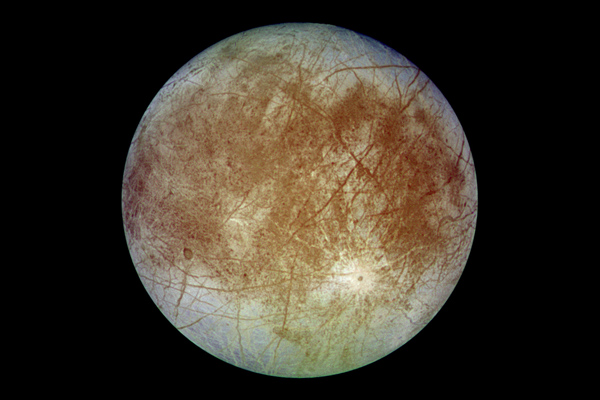 Europa / nasa.gov
Europa / nasa.govEuropa — next in line would be the smallest of Jupiter's Galilean Moons is Europa. An ocean flows beneath the surface of this moon which is kept fluid by a warm interior due to its close orbit to Jupiter and has scientist believing that it may be capable of sustaining life. Missions to this moon by NASA and ESA for closer observations have been planned for sometime in 2020 but actually preparations have not begun.
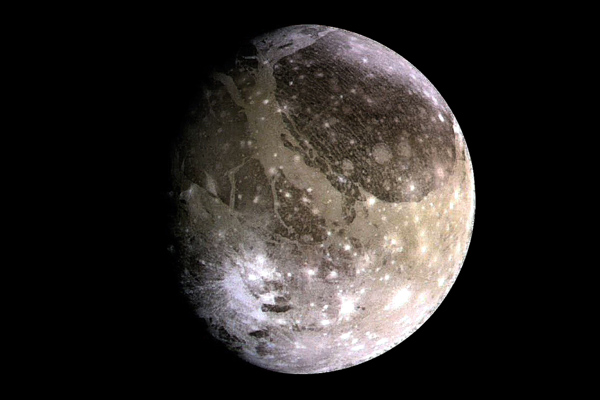 Ganymede / nasa.gov
Ganymede / nasa.govGanymede — is the largest satellite in our solar system, at approximately the size of Mercury, and would have been classified as a dwarf planet if not for its orbit around Jupiter. It is also one of the Galilean Moons and is third in line from the planet. Its core is comprised of both liquid iron and nickle which creates a magnetic field on the satellite. One interesting thing about Ganymede is that it's atmosphere has oxygen.
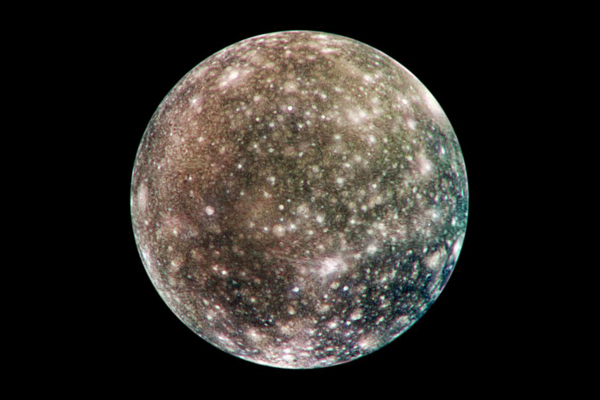 Callisto / nasa.gov
Callisto / nasa.govCallisto — the final Galilean Moon satellite of Jupiter is Callisto. It's orbit is well beyond Jupiter's main radiation belt and so the planets surface is much cooler then the other four satellites. However, it has the heaviest impacted surface in the solar system and shows no signs of geological activity since the impacts created its surface. It is believed that Callisto also has the oldest landscape in the system, dating back some 4 billion years.
Jupiter's Moons
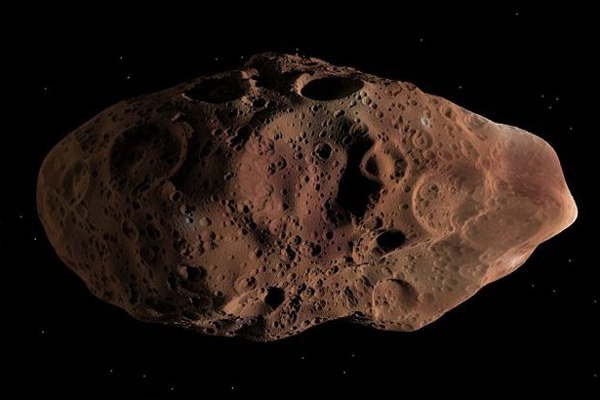 Amalthea / wikia.com
Amalthea / wikia.comAmalthea Group — is located in Io's (satellite part of the Galilean Moons group closest to the planet) orbit and contains four moons: Metis, Adrastea, Amalthea, and Thebe. Amalthea registers as a red color because of its higher temperatures due to its close proximity to Jupiter. Because they are so close to the planet (closer even then the Galilean Moons group) it is believed that in time they will fall into Jupiter's atmosphere.
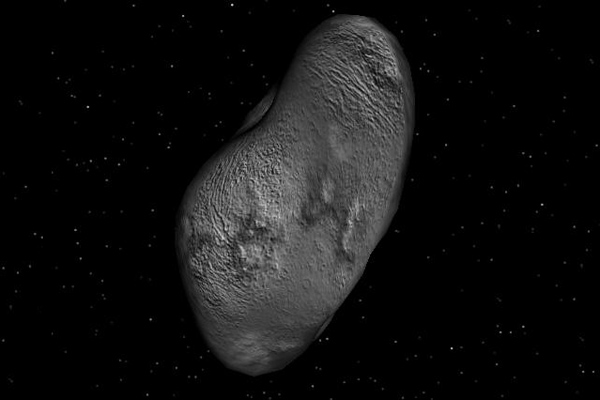 Himalia / wikia.com
Himalia / wikia.comHimalia Group — there is speculation that the moons that are listed in the Himalia Group may have at one point been a single asteroid and due to a collision, broken apart. These moons all have a reflective signature of approximately 4% which is characteristic of a C- or D- class asteroid. The moons that currently fall in this group are Leda, Himalia, S/2000 J11, and Lysithea.
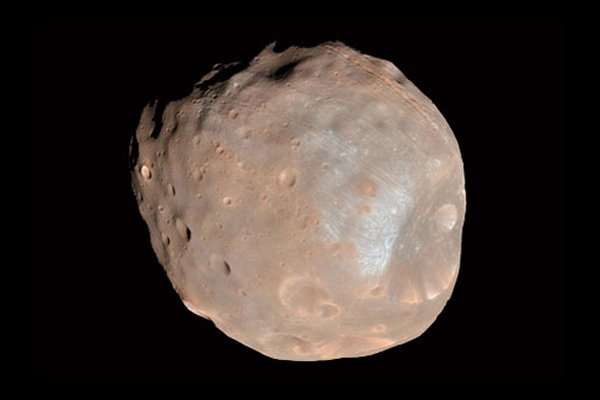 Pasiphae / pinterest.com
Pasiphae / pinterest.comPasiphae Group — just as the Himalia group, scientist believe that the Pasiphae group may have been a single asteroid at one time and were broken apart by a collision. If this is true then Pasiphae is the largest chunk of the two 87% and if it is not then it is believed that Pasiphae kept 99% of its original mass. The moons of this group include Pasiphae, Sinope, Callirrhoe, Megaclite, Autonoe, Eurydome, Sponde, Hegemone, Aoede, Cyllene, Kore, S/2003 J4, and S/2003 J23. There is less belief that the moons that fall under the Pasiphae Group are from the same "mold" as they are different in their compositions.
Carme Group — currently consist of 16 moons Carme being the largest, possibly retaining 99% of the original mass. The primary moons in this group are Taygete, Eukelade, S/2003 J 5, Chaldene, Isonoe, Kalyke, Erinome, Aitne, Kale, Pasithee, Arche, Kallichore, Herse, S/2003 J5, S/2003 J 9, S/2003 J19, and S/2003 J 10. These moons have a retrograde orbit, meaning they rotate in an opposite direction of its parent object.
Ananke Group — consist of 15 moons Praxidike, Iocaste, Harpalyke, Thyone, Euanthe, Euporie, Hermippe, Orthosie, Mneme, Thelxinoe, Helike, S/2003 J3, S/2003 J15, S/2003 J16, S/2003 J18, and the groups name sake Ananke. Like the other groups and pretty much all moons in Jupiter's orbit, it is believed that the moons were part of a larger asteroid that was broken apart in a collision. It is assumed that the original asteroid may have been approximately 28 km in diameter (17.4 miles).
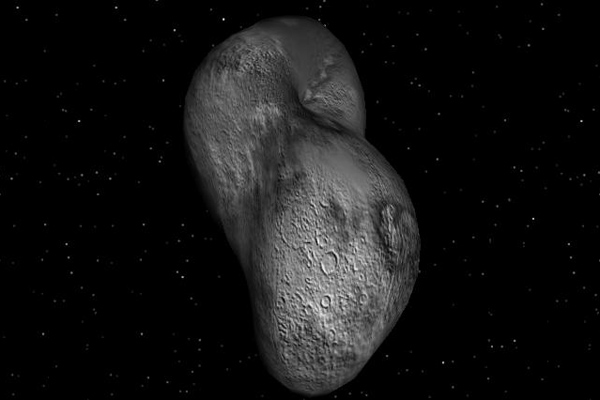 Themisto / wikimedia.org
Themisto / wikimedia.orgThemisto — unlike most of Jupiter's moons and satellites, Themisto is unusual in that it orbits alone. Discovered in 1975 originally, it was lost for a moment until sometime in the 1980's there was a brief note about it in an astronomers journal but it was "rediscovered" again in 2000 and officially named in 2002. Little else is known about this moon.
Carpo — is another of Jupiter's "loner" moons but unlike all its other moons, Carpo orbits prograde rather than retrograde. That is to say, the it orbits in the same direction as Jupiter. Carpo is also Jupiter's furthest moon to date and was only recently discovered in 2003. So little is known about this moon at this time other than it is approximately 3 km across and it takes 456 Earth days to complete its rotation.
See also: All satellites and moons, Jupiter
Video Gallery

-
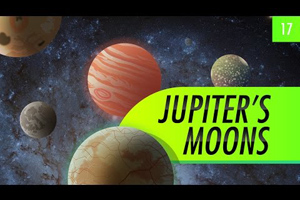 Jupiter's Moons: Crash Course Astronomy
Jupiter's Moons: Crash Course Astronomy
-
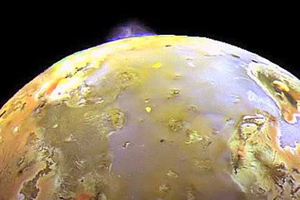 Jupiter's Galilean Moons
Jupiter's Galilean Moons